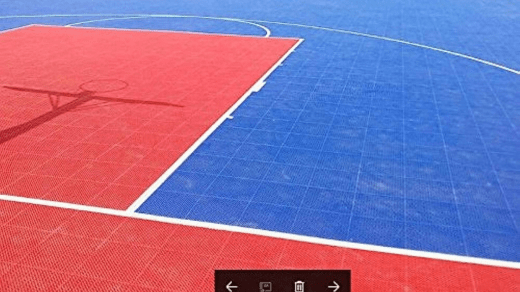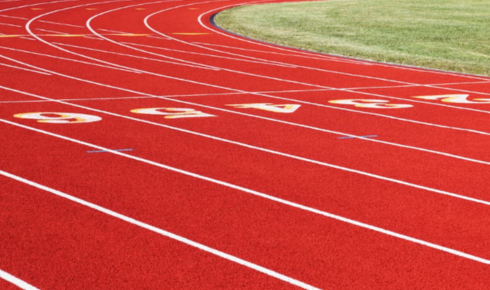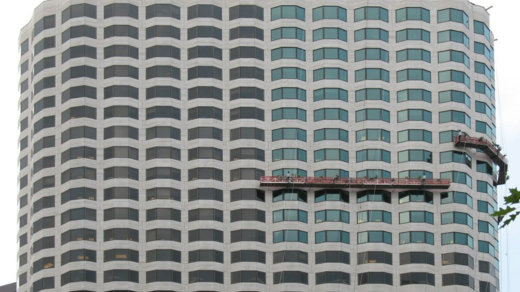
The world of sports is constantly evolving, and with advancements in technology, we are witnessing the rise of innovative solutions to enhance athletic performance and overall sporting experiences. One such advancement is the introduction of synthetic basketball court. These state-of-the-art playing surfaces are revolutionizing outdoor sports facilities, offering numerous benefits to athletes, facility owners, and the environment. In this article, we will explore the concept of synthetic basketball courts, their advantages, and how they are shaping the future of outdoor sports.
Understanding Synthetic Basketball Courts
Synthetic basketball courts, also known as artificial or all-weather courts, are engineered playing surfaces designed to replicate the characteristics of traditional outdoor courts. These courts utilize synthetic materials that offer enhanced performance, durability, and safety. The surface composition varies, but it often consists of a combination of polypropylene, rubber, and other synthetic fibers.
The Advantages of Synthetic Basketball Courts
Enhanced Performance and Safety
Synthetic basketball courts are designed to provide optimal playing conditions. The advanced surface materials offer consistent ball bounce, excellent traction, and improved shock absorption. This allows athletes to perform at their best, reducing the risk of injuries and ensuring a safe sporting environment.
Weather Resistance and Durability
Unlike traditional courts that can be affected by weather conditions such as rain, snow, or extreme heat, synthetic basketball courts are built to withstand the elements. The materials used are resistant to fading, cracking, and warping, ensuring long-lasting durability and consistent performance.
Reduced Maintenance Requirements
Maintaining a traditional outdoor basketball court can be time-consuming and costly. Synthetic courts require minimal maintenance compared to their natural counterparts. They are resistant to moss, weeds, and pests, and can be easily cleaned with a simple sweep or occasional power wash.
Environmental Sustainability
Synthetic basketball courts contribute to environmental sustainability. The materials used in their construction are often recyclable, reducing waste and promoting eco-friendly practices. Additionally, their low maintenance requirements result in reduced water consumption and the need for harmful chemicals.
The Evolution of Outdoor Sports Facilities
Traditional Outdoor Courts
For decades, outdoor basketball courts were primarily made of concrete or asphalt. While these surfaces served their purpose, they often lacked shock absorption, consistent ball bounce, and player safety features. The limitations of traditional courts paved the way for innovation in sports facility design.
Introduction of Synthetic Surfaces
The introduction of synthetic surfaces brought a paradigm shift to outdoor sports facilities. Synthetic basketball courts addressed the shortcomings of traditional surfaces, offering improved performance, durability, and safety features. These advancements significantly enhanced the playing experience for athletes.
Technological Innovations
With ongoing technological advancements, synthetic basketball courts continue to evolve. Manufacturers are constantly researching and developing new materials and designs to further enhance player performance, comfort, and sustainability. These innovations ensure that the future of outdoor sports facilities remains bright.
Design and Construction of Synthetic Basketball Courts
Surface Materials
Synthetic basketball courts feature a variety of surface materials, including polypropylene, rubber, and acrylic. These materials are carefully engineered to provide the desired level of shock absorption, ball response, and durability. The choice of surface material depends on factors such as budget, climate, and player requirements.
Court Dimensions and Markings
Synthetic basketball courts adhere to standard court dimensions set by governing bodies. The court markings are precise and accurately replicated to match those of traditional outdoor courts. This ensures that athletes can transition seamlessly between different playing surfaces.
Shock Absorption and Impact Reduction
One of the key benefits of synthetic basketball courts is their ability to absorb impact and reduce the risk of injuries. The materials used in the construction of these courts are designed to cushion the landing and minimize stress on joints, providing a safer playing environment for athletes of all ages and skill levels.
Customization Options
Synthetic basketball courts offer a wide range of customization options. From color choices to team logos and branding, facility owners can create a unique court design that reflects their style and identity. This level of customization adds aesthetic appeal and creates a sense of pride among players and spectators.
The Impact on Athletes and Gameplay
Enhanced Performance and Skill Development
Synthetic basketball courts provide athletes with a consistent and predictable playing surface. This consistency allows players to develop their skills more effectively, as they can focus on technique and strategy rather than adjusting to varying court conditions. The improved ball response and traction contribute to enhanced performance and overall gameplay quality.
Injury Prevention and Player Safety
Player safety is paramount in any sporting facility. Synthetic basketball courts prioritize safety by offering superior shock absorption and impact reduction properties. The cushioned surface minimizes the risk of common basketball injuries, such as sprained ankles or knee trauma, allowing athletes to play with confidence and reduce the chances of long-term damage.
Consistency and Predictability
Traditional outdoor courts can deteriorate over time due to weather conditions and heavy usage, leading to uneven surfaces and unpredictable bounces. Synthetic courts eliminate these inconsistencies, providing a uniform playing surface that allows athletes to rely on their skills without the added challenge of adapting to changing court conditions.
Economic Considerations and Return on Investment
Cost Analysis
While the upfront costs of installing a synthetic basketball court may be higher than that of a traditional court, a comprehensive cost analysis reveals long-term benefits. Synthetic courts require minimal maintenance and repair, resulting in significant cost savings over their lifespan. Additionally, the enhanced performance and durability attract more players and potential revenue streams for facility owners.
Longevity and Cost Savings
Synthetic basketball courts have an extended lifespan compared to traditional courts. Their resistance to wear and tear, fading, and degradation ensures that the initial investment pays off over time. Facility owners can allocate the saved resources to other aspects of the sports facility or invest in further improvements.
Revenue Generation Opportunities
Synthetic basketball courts open up opportunities for revenue generation. They attract more players, teams, and spectators due to their superior playing conditions. Facility owners can explore hosting tournaments, leagues, and events, generating income through entry fees, sponsorship deals, and concessions. The enhanced aesthetics of synthetic courts also contribute to a more appealing venue for hosting various sports activities.
Environmental Benefits of Synthetic Basketball Courts
Conservation of Water Resources
Maintaining natural grass or turf requires significant water usage, especially in dry climates. Synthetic basketball courts eliminate the need for irrigation, resulting in water conservation. This reduction in water consumption contributes to environmental sustainability and helps address the global issue of water scarcity.
Reduction in Chemical Usage
Maintaining traditional outdoor courts often involves the use of harmful chemicals, such as pesticides and fertilizers, to control weeds and pests. Synthetic courts reduce or eliminate the need for such chemicals, promoting a safer and healthier environment for athletes, spectators, and surrounding ecosystems.
Decreased Carbon Footprint
The production of synthetic materials for basketball courts has become more environmentally friendly over the years. Manufacturers now focus on using recycled materials and implementing sustainable manufacturing practices. Additionally, the longevity of synthetic courts reduces the need for frequent replacements, further reducing the carbon footprint associated with construction and maintenance.
Challenges and Limitations
Upfront Costs
The initial investment required for synthetic basketball courts can be higher than that of traditional courts. However, considering the long-term cost savings, improved performance, and revenue generation opportunities, facility owners can view it as a worthwhile investment.
Perception and Traditionalism
Some individuals may resist the adoption of synthetic basketball courts due to a preference for traditional surfaces or concerns about the authenticity of the game. However, as awareness grows about the benefits and advancements in synthetic court technology, acceptance and adoption are increasing.
Heat Retention Concerns
Synthetic surfaces have been associated with heat retention, which can make the court uncomfortable for players and spectators during hot weather. However, manufacturers are continually researching and developing solutions to address this issue, such as incorporating heat-reflective technologies into the court design. Synthetic basketball courts are shaping the future of outdoor sports facilities. Their enhanced performance, durability, and safety features make them an attractive choice for athletes, facility owners, and the environment. With advancements in technology and ongoing research, synthetic courts continue to evolve, providing athletes with optimal playing conditions and promoting sustainability in the world of sports.



